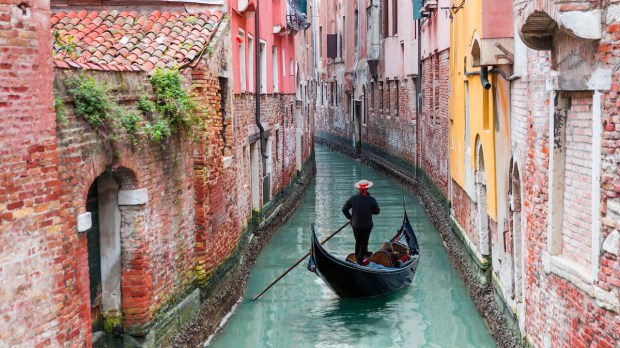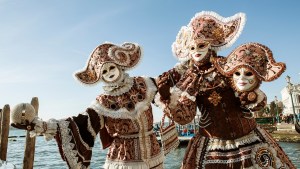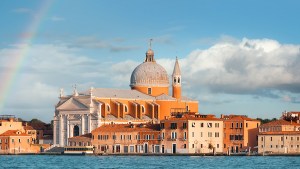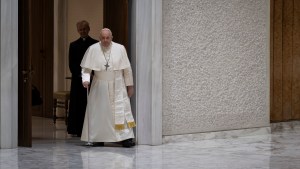In the long gallery of maps in the Vatican Museums is an “aerial view” of Venice in the 16th century. Above this highly innovative panorama (for its time), a winged lion, symbol of the port city, holds in its mouth a message written in Latin: “After Aquileia was ravaged by the Hun king Attila, the admirable city of Venice was founded by those who came to seek refuge there in the year 454.”
The episode refers to the origin story of the city on the lagoon, which we now know to be legendary. Aquileia, then the main port on the northern Adriatic, was completely destroyed by the Huns. All the inhabitants of the region, known as Venetia (an administrative region created by Augustus in the year 7), fled the “Scourge of God” guided by their bishops. They settled on the islets of the lagoon, which became Venezia (later nicknamed “La Serenissima,” — “The Most Serene”). Although invented by an unscrupulous chronicler, this episode remained the official version until the 20th century.
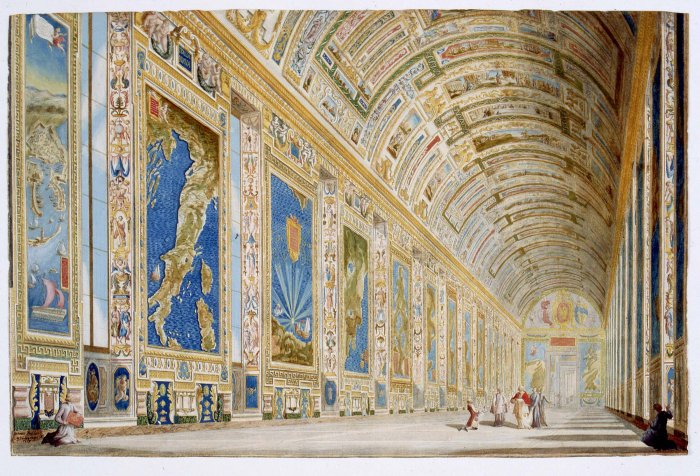
The fact that this story is recalled by the popes’ geographers in the 16th century nevertheless underlines a historical constant: The territory of Venice is strategic, as it is both a bridge between northern Europe and the Adriatic and the most important land gateway, via the plain of Pannonia, to Italy and thus to Rome.
Venice and the Papal States
After the fall of the Roman Empire, many neighboring peoples passed through this territory over the centuries on their way to Italy. After the Lombards took Ravenna, the last bastion of the Eastern Roman Empire in Italy, in 751, Pope Stephen II intervened in the political game on the peninsula and obtained the intervention of Pepin the Short.
The Frankish victory over the Lombards had two consequences. On the one hand, Stephen II was able, with Frankish support, to found the first Papal States. On the other hand, these did not include the area of the lagoons north of Ravenna, leaving a political entity to grow up on the margins of papal territory, which would become — after many years of evolution — the Republic of Venice.
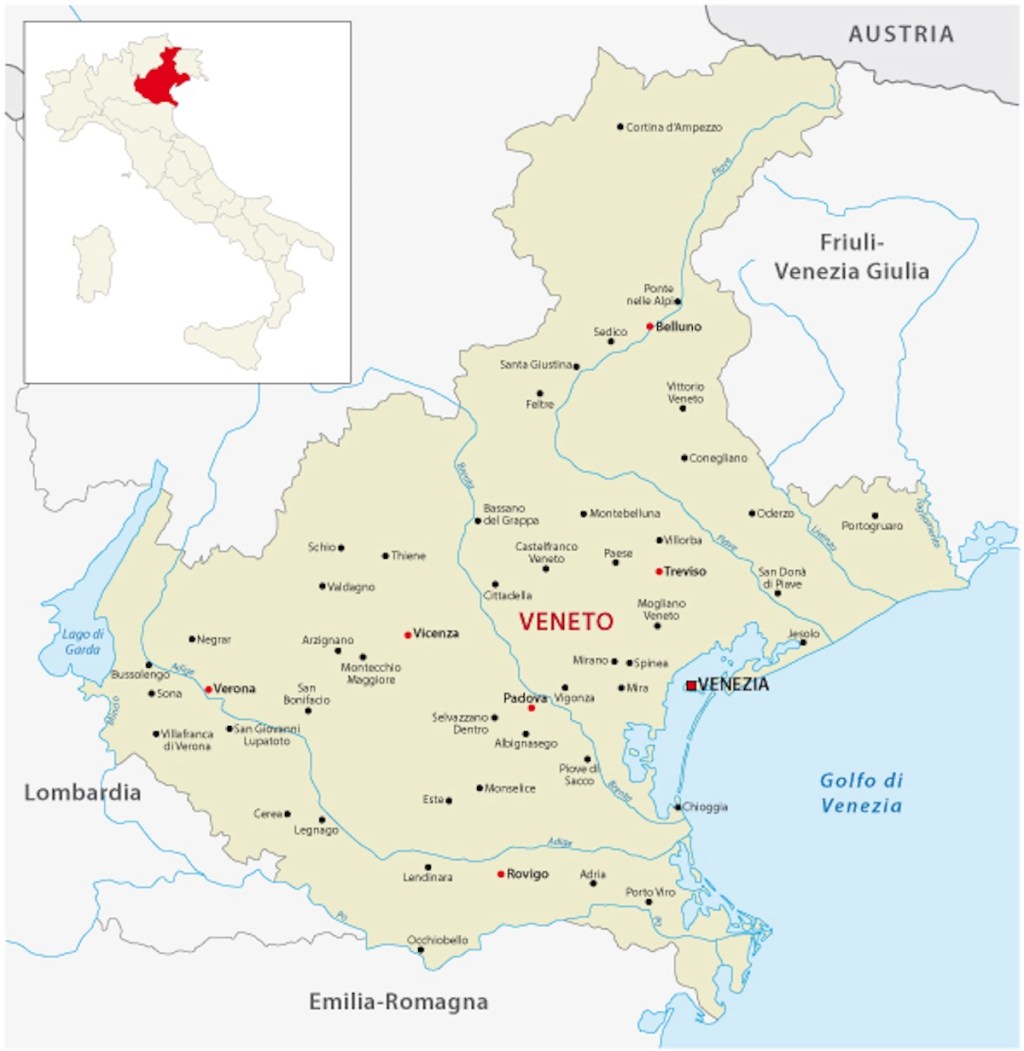
Faith, the driving force behind Venetian growth
The theft of the relics of Mark the Evangelist in Egypt in 828 was one of the key points of the city’s construction and independence, making it an important religious center and leading to the creation of the Patriarchate of Venice in 1451.
In the 11th and 12th centuries, Venice took maritime control of the Adriatic and became the key intermediary in the sometimes tense exchanges between Rome and Constantinople — even beating the “Second Rome” on the seas in 1175.
At the same time, Venice had to resist the lusts of the Holy Roman Empire as the emperors threatened the popes in Italy, and so found support in Rome while relying on diplomacy.
In 1177, the signing of the Peace of Venice by Pope Alexander III and Emperor Frederick Barbarossa in the port city strengthened Venice politically and economically. Such was the gain made that this event is still celebrated every year on Ascension Day in Venice.
A troublesome neighbor
The economic rise of the “Venetian thalassocracy” was clear to see, as when it led to the sack of Constantinople in 1204, organized by Venetian shipowners — which was condemned in vain by Innocent III. Thereafter, numerous territorial conflicts pitted the popes against Venice on the Po Valley: for Ferrara in 1307 — during which the entire city of Venice was placed under interdict — then for Romagna in 1503-1504 — during which Venice successfully defended its interests.
In 1508, Pope Julius II joined the League of Cambrai, created to counter Venice, which was judged too influential. However, in 1510 the League turned against his main ally, Louis XII’s France, when the latter came too close to its lands. The Pope then formed the Holy League with Venice … which the latter left for the French camp, with whom it defeated the Pope at Marignan in 1515.
In 1608, Pope Paul V placed Venice under interdict and excommunicated the doge after a territorial dispute that degenerated into a religious conflict. The Jesuits, supporters of the pope, were expelled from the lagoon, while the pontiff attempted to have Paolo Sarpi, the main theologian supporting the Venetians, assassinated.
Venice in Rome
In this conflict, Rome eventually gave in: from the 14th to the 17th century, the Venice of the doges became a force to be reckoned with, to the point of being able to speak on equal terms with the pontiffs. In 1406, the first “Venetian pope,” Gregory XII, was elected, followed by Eugenio IV and Paul II still in the 15th century, Alexander VIII in the 17th century, and Clement XIII in the 18th century.
The latter built the Palazzo di Venezia in Rome, which became the Serenissima’s embassy to the popes. For their part, the popes sent their first nuncio to the lagoon in 1500 — just eight years after the foundation of the first nunciature in Spain in 1492 (and thus before France).
The glory of Lepanto
In the 16th and 17th centuries, however, Venice’s stranglehold on the Mediterranean was crumbling in the face of rising Ottoman power. Venice presented itself as a maritime bulwark against Islam. The Holy See became a natural political ally for the doges — despite tensions caused by the “libertine” tendencies of the nation of Casanova.
Pope Pius V’s creation of the new Holy League in 1571 led to the much-publicized victory at Lepanto that same year. During the battle, Venetian admiral Francesco Duodo led the Western navies, including a number of papal galleys, to a crushing victory over the Sultan’s fleet, in a war one-third financed by the Serenissima. The popes supported numerous Venetian military expeditions to Crete and the Morea in the 17th century.
The fall of Venice
Both the Venetian Republic and the Holy See suffered the consequences of the French Revolution. In 1797, however, the Serenissima suffered its greatest blow when revolutionary troops led by Napoleon seized it. Integrated into the French coalition, then into the Austrian Empire and finally into Italy, Venice suddenly saw the end of nearly eight centuries of independence.
For their part, the Papal States were dismantled and shaken by the death in exile of Pius VI in 1799. While the revolutionary “hordes” held Rome, the Holy See owed its salvation to the refuge offered by the islands of the lagoon: It was in fact in Venice, in 1800, that the conclave leading to the election of Pius VII was held.
